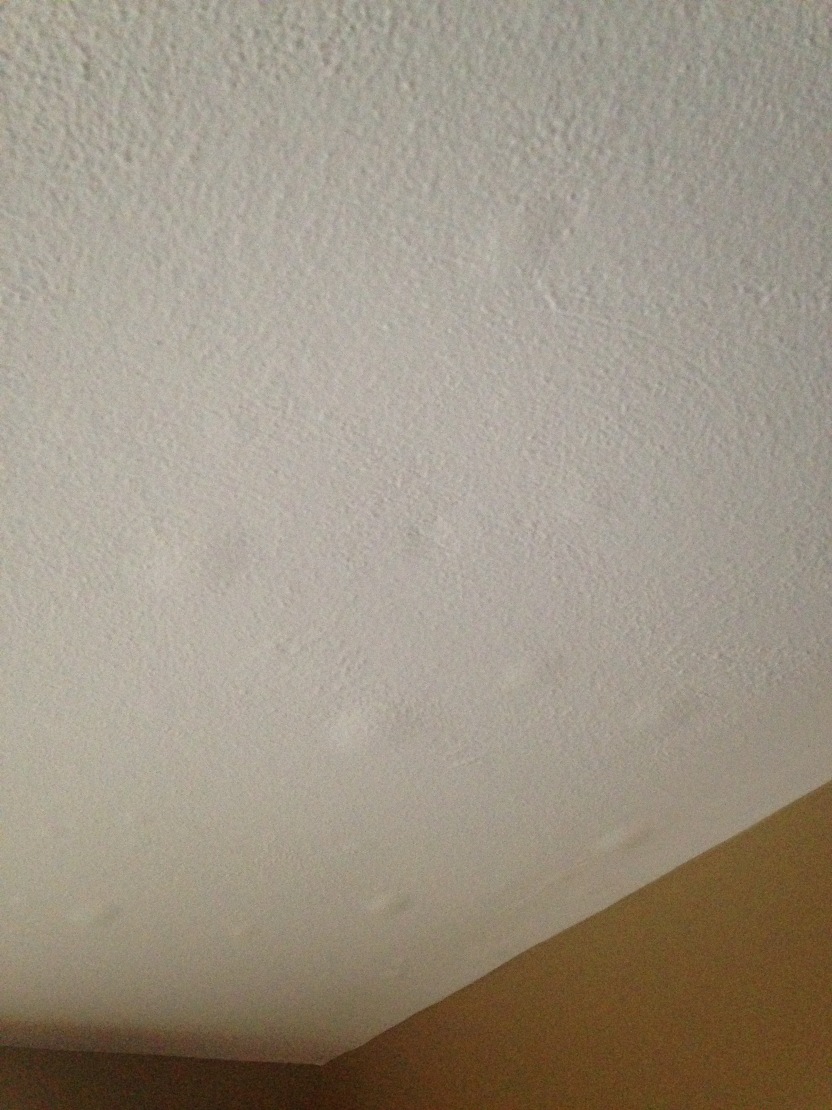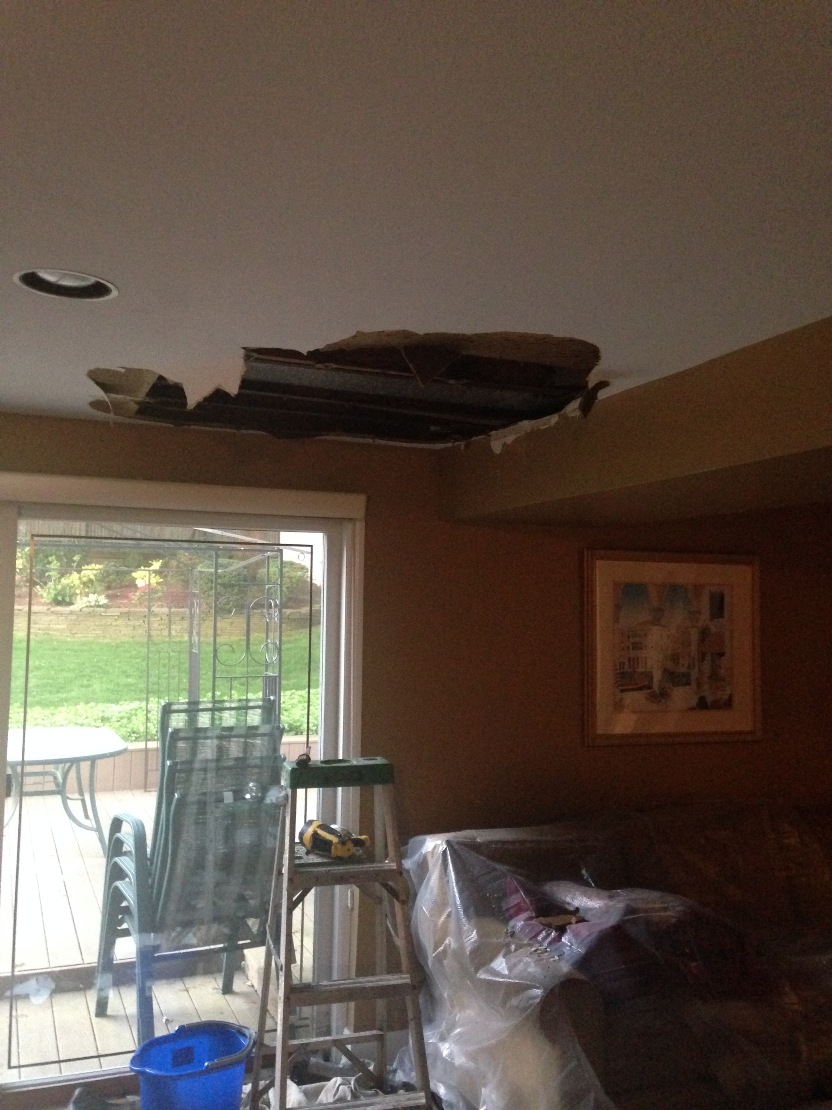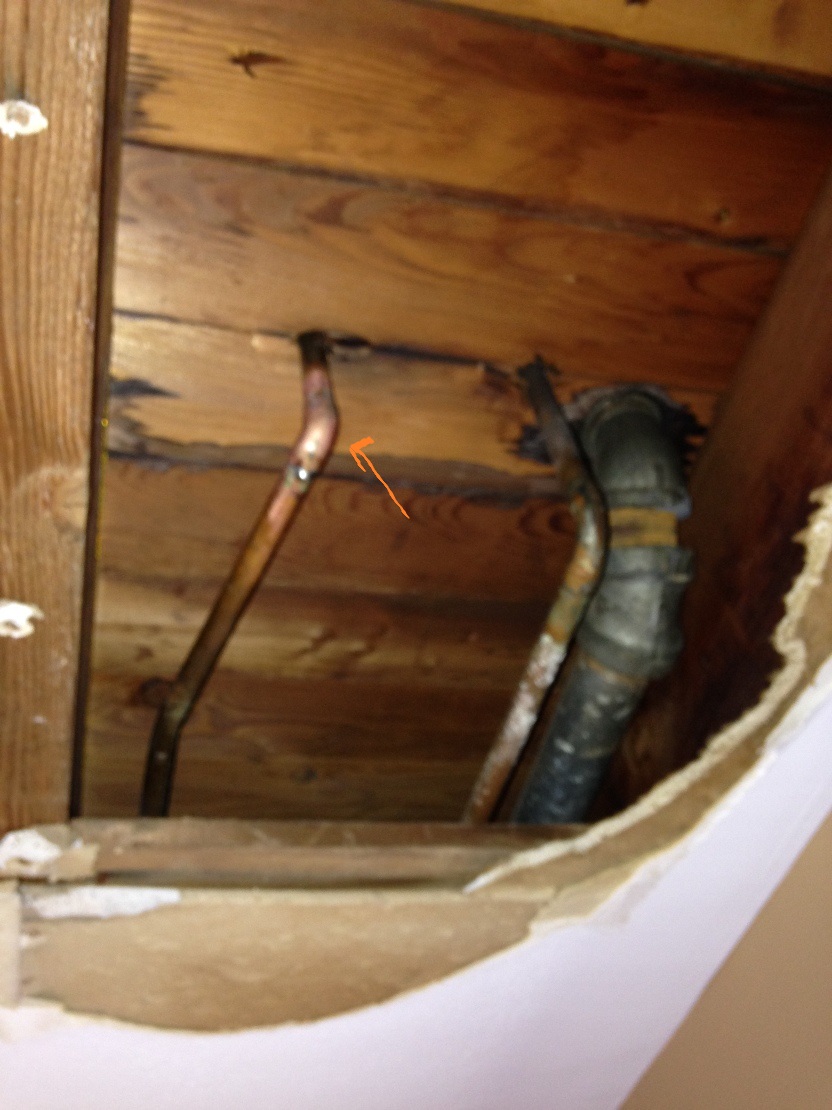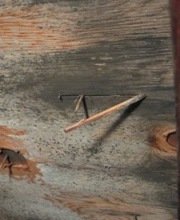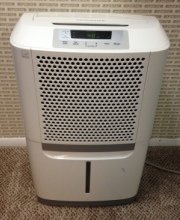Find a Mold Specialist Now
Click or Call, Toll-Free 24/7
Ceiling Water Damage Repair
Ceiling water damage repair may seem daunting and it certainly can be a big job. We'll explain the basic steps, but we also suggest you consult a professional if you have significant water damage to ceiling areas in your home or if the damage was caused by a flood.
Step One: Find the Leak
If you have water damage to your ceiling, you have a leak somewhere. It could be a leak in your roof, or if you have a two-story house and there is water damage to the ceiling on the first floor, there could be a leaky pipe or a leaky toilet upstairs.
Sometimes finding the leak is a relatively simple matter but other times, it can be quite a challenge. The leak causing the problem may not be right above the damaged part of the ceiling. Water can travel along the outside of a pipe, an eave, or other surface and damage the ceiling some distance from the place it originates. If you have trouble finding the leak, you can call in a water damage contractor for assistance.
The leak pictured to the right was caused by a pinhole leak in a pipe from a bathroom above.
Step Two: Repair the Leak
There is no point in trying to repair any water damage to your ceiling until you've located and fixed the leak that caused the damage. Sometimes it's hard to know if you've actually fixed the problem or not. For instance, if you have determined the water damage was due to a leak in your roof and you repaired an area on your roof you think was leaking, you won't know for certain that you fixed the right spot until the next time you get a good rain. Make sure the problem is fixed before going on to repair the damage to your ceiling.
Step Three: Remove Damaged Drywall or Ceiling Panels
Before beginning this step, put down tarps to protect the floor covering. If you think the ceiling may be moldy, you'll also want to close off your work area with heavy sheets of plastic so mold spores don't drift into other areas of the home. You'll also want to wear an N-95 respirator mask and safety goggles to protect yourself from drywall dust and other debris.
Small areas of damage can be removed by cutting around the area with a keyhole saw. Larger areas may need to be removed with the claw end of a hammer or a wrecking bar.
Step Four: Ceiling Water Damage Repair
To patch small areas of water damage to your ceiling, you can simply cut a piece of drywall or ceiling panel to fit the hole. To repair larger areas of damage, you may need to use a full sheet of drywall or a full ceiling panel. You can use joint tape on the seams, along with joint compound applied with a putty knife.
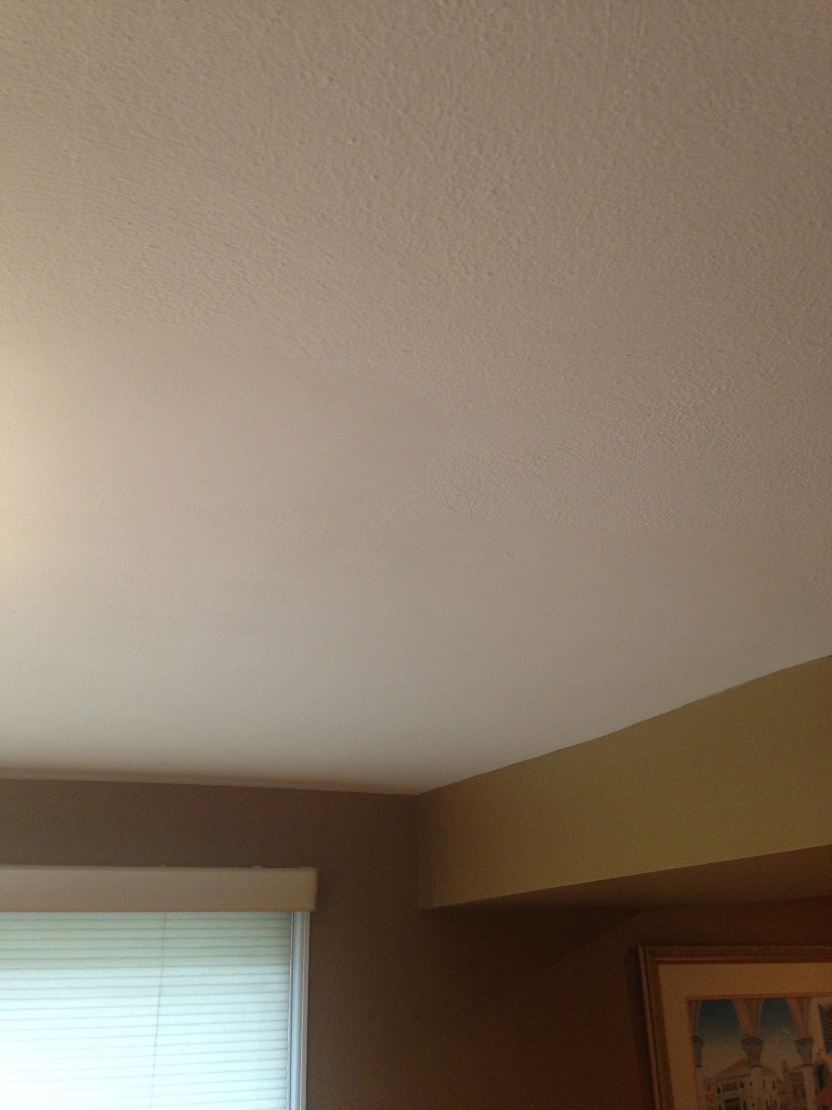 Ceiling repaired and repainted
Ceiling repaired and repaintedStep Five: Repaint the Ceiling
After you've finished your ceiling water damage repair, you can repaint the ceiling.
A Warning about Mold
Sometimes a roof can leak for a while before any water damage to ceiling is seen. If this is the case, there may be mold present above the ceiling. If so, you'll need to remove the mold before repairing the ceiling. You'll also need to inspect the rest of the home for mold, since mold spreads easily from one area to another.
Mold removal makes the job much more complicated and also more urgent, since mold is associated with numerous health problems and can also cause extensive damage to your home. If you have mold covering an area greater than 10 square feet or if mold develops after your home has been flooded, the U.S. Environmental Protection Service Agency recommends calling in a mold removal professional for the job. You should also call in a professional if you have respiratory problems such as asthma that might be made worse by exposure to mold during the cleanup process.
You can read more about removing mold here.
Contacting a Water Damage Contractor
If you need assistance with ceiling water damage repair, you can consult with a water damage contractor. An experienced contractor will visit your home to assess the damage, advise you about the work that needs to be done, and give you a written estimate of the cost. If the water damage was caused by something covered by your homeowners insurance policy, the contractor can assist you in filing a claim. To find water damage contractors in your area, just follow the link.
Return From Ceiling Water Damage Repair To Our Main Water Damage Page
Privacy Policy Terms and Conditions Accessibility Do Not Sell My Information Disclaimer Contact Us

